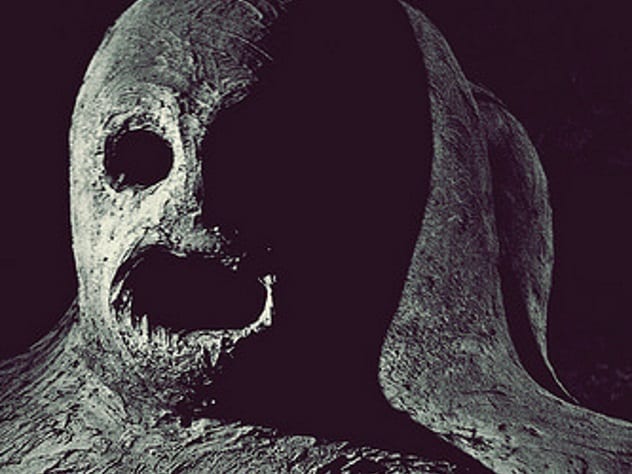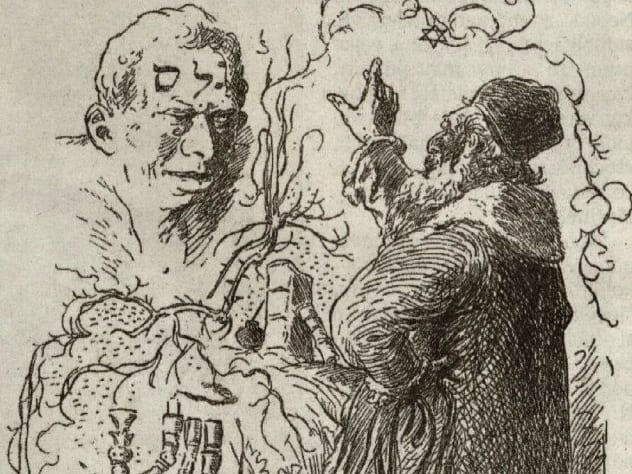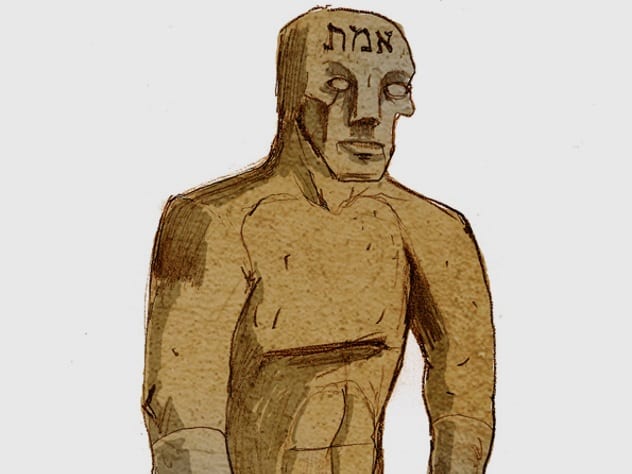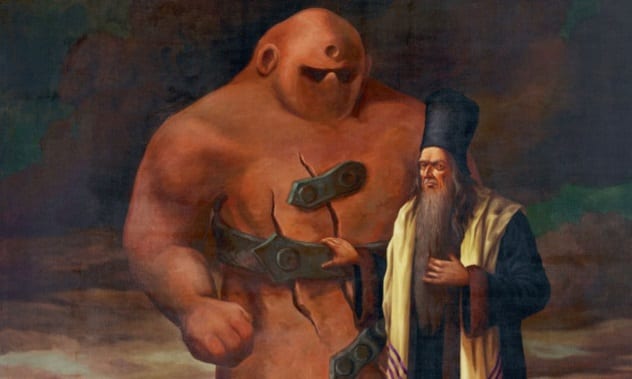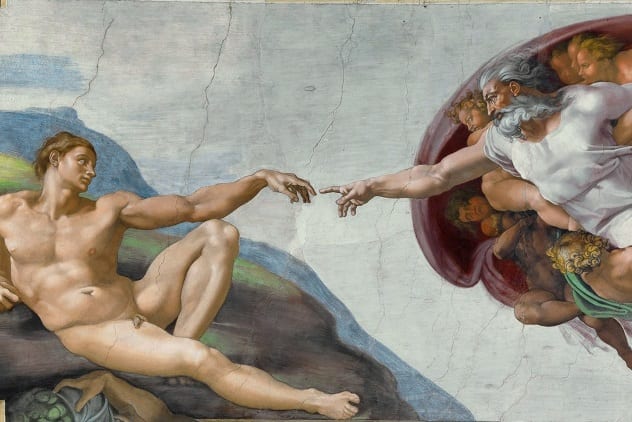It may seem that the mythology around golems is not as rich or interesting as that of the aforementioned creatures. Well, that is not the case. In the following list, we will analyze the stories surrounding golems, and we will see that these beings are as fantastic and intriguing as any other legendary creature.
10 What Is A Golem?
Let’s start by defining the physical nature of these beings. A golem is an anthropomorphic creature created from inanimate matter such as clay. This creature is usually brought to life through magical rituals or procedures and is limited to obeying any order of its creator in a literal way. That last thing is because, in general, golems do not have a conscience; they are like robots. Since, in most cases, they are created to perform hard physical tasks, golems are made with grotesque bodies.[2] They have thick limbs and a small head, with human-like facial features. Although mud and clay are the most common materials for building their bodies, the wide mythology also depicts golems made of many other elements, such as wood, wax, and metal. Golems tend to grow in size over time. If a golem gets too big, it can rebel against its creator and develop its own plans.
9 The Origin Of The Golem Mythology
For the definition we have just seen, there are many ancient stories about the first golems. These myths were born in different times and in different regions of the world. For example, the Mayan myth of creation describes that before the first humans, the gods created wooden men. But these beings had no soul, so they wreaked havoc on the Earth, and in the end, they had to be destroyed. On the other side of the world, in ancient Greece, there was the story of an inventor named Daedalus who built living statues. These sculptures were supposedly harmless, although if they were not restrained, they could run away. But the description of golems as we know them today comes from Jewish folklore. Throughout medieval times, there were many rumors that some Jewish teachers or “Rabbis” had learned to perform the rituals contained in a sacred text called Sefer Yetzirah.[3] This text supposedly described the way God created life, and thus, the Rabbis could learn to create their own living version of a clay man, the golem.
8 They Are First Mentioned In The Bible
When it comes to finding the first written reference to golems, one would expect to read such mention in some book or magical text of the Middle Ages. After all, we just saw that the concept of golems as such seems to have emerged in those times. However, the first mention of the term took place many centuries before in one of the most influential books in history, the Bible. The earliest mention occurs in Psalm 139:16, written around the fifth century BC. The text says: “Your eyes saw my unformed limbs,” as translated from golmi ra’u enecha.[4] The Jews believe that the phrase was said by Adam, the first human, and the term “golem” used there literally means “unfinished substance.” It is interesting to note that the word “golem” appears only once in the entire Bible, in the text we just quoted. Nevertheless, the same idea about life being created from inert matter appears again in other places of the Old Testament, as we will see later.
7 Creating A Golem Is A Difficult Task
In video games, you can create a golem with a few key combinations. In fantasy books, it is shown that almost anyone can create a golem using simple magic spells. But the truth is that if we go by the original sacred texts—also called Kabbalistic texts—that describe the creation of a golem, the reality is different. According to these Jewish writings, creating a golem is an extremely difficult task. There are numerous texts describing the formation of a golem, and although there are variations in its procedures, all these tend to coincide in certain points. For example, the creator of the golem has to be someone pure, clean, and close to God. The type of material used in the golem must be uncontaminated, while the ritual to give life to the golem is verbal and usually involves the Hebrew name of God. Once the body of the creature is molded, some writings indicate that the creator must sing a combination of Hebrew letters with the name of God, which will give life to the creature. Other instructions state the Hebrew word emet (“truth”) must be written in the golem’s forehead to activate it,[5] while to deactivate it, the first letter is erased, thus forming the word met (“death”). A third version says that a paper with the name of God must be introduced into the mouth of the golem to breathe life into it. In general, the golem’s creator must have mastered the use of sacred texts—such as the already mentioned Sefer Yetzirah, which would probably require years of study with another rabbi. This is because if an error occurs during the creation ceremony of the creature, the consequences will be both negative and unpredictable.
6 The People Who Created Golems
We have a wide repertoire of documented cases over the centuries in which certain people have tried to create golems. The best-known case is that of Rabbi Judah Loew and his Prague Golem. In the 16th century, Jews from Prague (Czech Republic) were being persecuted by Christians. To protect the Jewish community, Rabbi Loew created a clay golem 3.4 meters (11 ft) tall,[6] which successfully repelled the attacks. But later, the golem got out of control and became violent, so the rabbi had to deactivate it. It is said that the remains of the golem are hidden to this day in the attic of a synagogue in Prague. There exists another story about Rabbi Isaiah Horowitz, who, also at some point in the 16th century, created a female golem for sexual purposes. After being accused of immoral acts, Horowitz said that “sex with a golem is not a sin,” because the creature was not naturally begotten. We also have the story of Rabbi Eliyahu, who, around the year 1583, created a golem in the community of Chelm (Poland). Although the golem served his master and achieved great feats, the creature would not stop growing. Fearing that the golem was going to end up destroying the world, Eliyahu turned it off. Some versions say that its body fell on the rabbi, crushing the 33-year-old man to death. Meanwhile, in ancient Egypt, people molded figurines of clay and wood called ushabti. These figures were specifically built to help the dead in the afterlife and were brought to life with an Egyptian prayer. In the same line of “afterlife golems,” the Chinese emperor Qin Shi Huang ordered the building of an army of thousands of terracotta soldiers in the year 246 BC. These warriors made of clay were meant to protect Qin Shi Huang in his other life, just as the emperor was protected by human soldiers in this world.
5 The Legends About Them Are Still Important Today
The first biblical references to the golems, mentioned in previous points, occurred centuries before the first known stories of rabbis creating these beings. Even a couple thousand years passed before the legend of Rabbi Loew and his golem. This shows that the stories of golems are well-rooted in Jewish culture and therefore in much of human history. Just as dragons and their millenary stories keep generating interest today, golems have also persisted through time and continue captivating many people throughout the world. In 1915, at the very beginning of cinema history, the Germans produced one of the first monster movies, Der Golem. The plot revolves around an old resurrected golem that, after feeling rejected, creates chaos everywhere. During the following decades, countries like France and England also launched their own movie versions of the Jewish myth. More recently, an Israeli film called The Golem (2018) has played at several film festivals. This movie reimagines the story with a Jewish woman who makes a clay creature to protect her community from invaders. In 1974, Marvel released three comic book issues featuring a golem of the Middle Ages. Marvel’s Golem is 2.4 meters (8 ft) tall and was buried in the sand for centuries. A professor finds it and, with his own life, reactivates the golem to protect his family. The famous game Dungeons & Dragons, also released in 1974, has golems among its main characters.[7] It is clear that golems have left a mark on human culture and will continue to do so in the future.
4 The Spine-Chilling Encounters With The Prague Golem
We have already said that the famous golem made by Rabbi Loew has been kept until now in the attic of the Old-New Synagogue in Prague, hidden from the rest of the world. However, over time, there have been several rumors about people who, out of curiosity or ignorance, actually went up to see the golem, which only makes us become more intrigued by this creature. First, we have Rabbi Ezekiel Landau, an influential Jewish teacher of the 18th century. Once, Rabbi Landau decided to enter the attic of the Old-New Synagogue. Although we do not know what he saw there, the rabbi came back shivering, totally pale, and ordered entrance to the attic permanently banned. It seems that his order was not taken into account because on another occasion, some children, curious to know if the golem was still there, also entered the attic. After the children did not return, the rabbis below prayed to God and then went up to the attic to rescue them. There, they found that the children were lying on the floor, deeply asleep, and could not be awakened until they left the attic. The most recent—and bloodiest—anecdote involves the Nazis occupying Prague. During World War II, the Nazis began to systematically destroy Jewish synagogues in the former Czechoslovakia. On one occasion, a Nazi soldier went up to inspect the attic of the Old-New Synagogue. To his surprise, the golem was in there, whereupon the agent tried to stab it. Instead, the golem killed the soldier by ripping him apart, limb from limb. After this situation, the Gestapo decided not to return to the attic of the Old-New Synagogue, and the building remained safe for the rest of the war.[8] We can agree that was too much for a first encounter.
3 What Is The Purpose Of Their Stories?
The tales about golems have had multiple purposes throughout history, this being the point where lies the greatness of these fables. Within the stories themselves, the golem was created with the purpose of obeying its creator in everything. This, in turn, means that the missions of a golem could range from drawing water from a well to protecting an entire community from enemies. Everything depended on the wishes of its master. It is also believed that golems had a psychological purpose, since by being imperfect, these creatures reflected the bad qualities of their masters. Then the creator could use the golem as his “mirror,” see his defects, and thus try to improve his own personality. Meanwhile, the actual purpose of golem legends told by Jews has to do with the enormous oppression that their community repeatedly suffered. For example, during the Thirty Years’ War that occurred during the 17th century in Europe, Jews were persecuted and massacred in many cities. Given this situation, several authors point out that the Jews strongly wished that God would do justice in their favor, that He would give them a savior to protect them from enemies. This is where the golem acquires the role of protector in their culture, along with other amulets and superstitions. And the third meaning of the tales about mud men is to show the concept of hubris. This idea was born in ancient Greece and encompasses the feeling of human beings who believe they can surpass and subdue the laws of nature at will. In many stories about golems, including those that we have already seen here, their creators play at being God by creating life, but then this “life” gets out of control and unleashes chaos.[9] So the Jewish legends about golems also seek to show the consequences of hubris; humans must accept that they are inferior and that their power must have limits.
2 Golems Inspired The Story Of Frankenstein’s Monster
The story of a man giving life to a creature made of inert matter is not new to us. However, it is not because of Jewish golems that we know this concept; it became common for us through Frankenstein’s monster, described by the writer Mary Shelley in her 1818 novel. For this reason, it is surprising to know that it was actually the figure of the golem that inspired the English writer to invent her famous creature. There is solid evidence that the mythical golems inspired Mary Shelley to create Frankenstein’s monster. Many experts agree that a particular legend inspired the story, specifically that of the German linguist Jacob Grimm.[10] His account is basically a summary of Jewish legends about golems, describing how some experienced teachers used magic to build living creatures, but then both the creation and the creator ended their lives in tragedy. Eight years after that publication, and at a time when golem stories were popular, Shelley began to devise her story about Dr. Frankenstein. In turn, the golem and Frankenstein’s monster share an impressive number of similarities. Regarding their physical nature, both creatures have grotesque yet durable bodies, move almost mechanically, and have a limited intellect. And regarding their stories, there is an analogy again. A wise scholar uses science or magic to give life to an inert body; then the artificial creature feels marginalized and escapes the control of his master, who risks his life trying to correct his mistake. Because of this multiplicity of similarities between the two myths, some even say that Frankenstein’s monster is itself a golem.
1 Humans Are Golems
What if the creator of a clay being is a created being made of clay? That would be a great irony of life—or a decent tongue twister. But the truth is that in many ancient cultures, it was believed that human beings themselves are golems, inferior creations from the earth made by a superior deity. In Hebrew mythology, the Babylonian Talmud, written in the third century AD, says that the first human created by God remained as a soulless golem during the first 12 hours of existence. A similar idea takes place in the Old Testament, for example, in the book of Job. Job 33:6 says: “See, before God I am as you are; I too was formed from a piece of clay.” It is believed that Job himself said these words to Adam, whose name literally means “one taken from the earth” in Hebrew. Based on this text, scholars believe that in the biblical canon, all descendants of the first human have his same elementary characteristics.[11] In short, if we believe in Hebrew mythology, then all of us are golems. We also know that in ancient Egypt, it was believed that the god Khnum created humankind from clay like a potter. And in ancient Greece, there was a myth that the titan Prometheus molded the first humans from mud. In addition to the characteristics we have already seen at the beginning of this list, another rule that defines the nature of a golem is that the creature is always inferior to man. Just as golems are much less intelligent beings than humans, the aforementioned religious beliefs show human beings as infinitely inferior to gods, so for them, we are golems. The moral of the story: Do not act like a golem by creating chaos, or some higher being will have to turn you off. Economy student, passionate about Graphic Design, an avid enthusiast of the art of writing.
